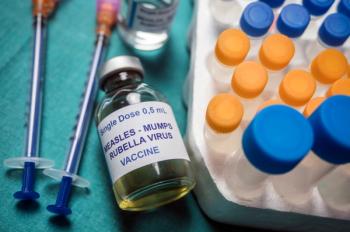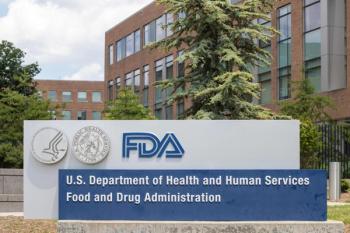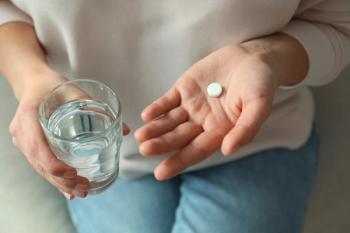
Inpatient Biosimilar Use Grows, Offering Cost-Saving Opportunities for Health Systems
Key Takeaways
- Biosimilar adoption in inpatient settings has increased, offering financial benefits without compromising patient care, especially in oncology and supportive care.
- From 2019 to 2024, biosimilars accounted for 24.4% of inpatient encounters, with significant growth in supportive care and oncology.
A comprehensive analysis of inpatient biologic and biosimilar use over 6 years reveals significant growth in biosimilar adoption, highlighting a valuable financial opportunity for pharmacy departments and health systems. The study, presented at the American Society of Health-System Pharmacists 2025 Pharmacy Futures meeting, emphasizes how expanding biosimilar utilization in the inpatient setting, especially in oncology and supportive care, can help reduce drug acquisition costs without compromising patient care.1
Biosimilars in the Inpatient Setting
Biologics have transformed the management of numerous acute and chronic conditions, including cancer, autoimmune diseases, and supportive care for chemotherapy. Their biosimilar counterparts offer highly similar therapeutic effects at reduced costs, a key factor for outpatient reimbursement.2
However, inpatient biologic administration differs in reimbursement models, as there is typically no separate payment for individual drugs during hospital stays. This makes optimizing purchase prices crucial to managing inpatient drug budgets. Pharmacy leadership and health system executives must collaborate with clinical providers to identify where biosimilars can be leveraged to maximize cost savings without affecting clinical outcomes.2
Study Overview and Methods
The study examined inpatient biologic use from 2019 through 2024, analyzing deidentified data from Trisus Medication Compare, representing national real-world data, and institutional data from Prisma Health. Researchers focused on inpatient encounters where patients received either reference biologics or biosimilars for 9 key agents: filgrastim, pegfilgrastim, infliximab, rituximab, bevacizumab, trastuzumab, tocilizumab, epoetin alfa, and insulin glargine.1
The primary goal was to characterize overall and annual trends in biosimilar vs reference product dispensations. Secondary analyses explored variations by specialty areas, including oncology, supportive care, immunology, ophthalmology, and endocrinology; geographic location; and differences in wholesale acquisition costs (WAC) between reference and biosimilar products.1
Key Findings: Steady Biosimilar Growth With Specialty Variations
The data set included 909,969 inpatient encounters from 458 health care entities. Approximately 75.6% involved reference biologics, whereas biosimilars accounted for 24.4%. The population was predominantly adult (97.3%), with an average age of 62 years, primarily treated in urban (89.4%) and nonacademic centers (63.3%).1
Across most product categories, biosimilar use steadily increased from 2019 through 2024, except for ranibizumab, which showed limited biosimilar adoption. Insulin glargine represented the largest sample, with 723,170 dispensations, starting at 12.1% biosimilar use and rising to an expected 29.4% by 2024.1
Supportive care drugs saw particularly high biosimilar adoption rates: filgrastim (84.8%), epoetin alfa (76.2%), and pegfilgrastim (52.6%). Rituximab, widely used for acute and chronic indications, showed biosimilar use in 59.3% of real-world encounters and 66.8% in institutional data.1
Among oncology biologics, trastuzumab biosimilars accounted for 65.7% of inpatient use (although the sample size was small at 119 encounters), whereas bevacizumab biosimilar use was lower at 35.8% (329 encounters). Infliximab biosimilar adoption was notable—53.4% overall, increasing to 79.6% in 2024 real-world data, and 67% in institutional records. Tocilizumab biosimilars, newly introduced in 2024, had the lowest uptake, making up just 15.5% of dispensations.1
By specialty, biosimilar utilization was highest in supportive care (77.8%) and oncology (57.9%) settings, underscoring areas where substitution could deliver the most impact.1
Financial Impact: Significant Cost Savings Potential
The wholesale acquisition cost comparison revealed a mean 35% reduction in 2024 for biosimilars vs reference products. The largest cost differentials were observed with filgrastim 480 mcg (-55%), epoetin alfa (-51%), and pegfilgrastim (-48%). These savings highlight the potential for inpatient biosimilar adoption to meaningfully reduce health system drug expenditures.1
Implications for Pharmacy Practice
This study demonstrates that inpatient biosimilar adoption is increasing nationally and within health systems like Prisma Health, especially in oncology and supportive care specialties. Despite this progress, opportunities remain to further increase biosimilar use to optimize drug procurement costs.1
Pharmacies are well positioned to lead these efforts by collaborating with providers to identify areas ripe for biosimilar substitution, educate stakeholders about clinical equivalency, and streamline formularies to support cost-effective prescribing. With biologics representing a substantial portion of inpatient drug budgets, expanding biosimilar adoption can support sustainable health care delivery while maintaining quality patient care.
REFERENCES
1. Mccoy JW. Real-world inpatient use of reference versus biosimilar products. Presented at: American Society of Health-System Pharmacists 2025 Pharmacy Futures. Charlotte, NC; June 10, 2025.
2. Biosimilar and Interchangeable Biologics: More Treatment Choices. FDA. Updated August 17, 2023. Accessed June 10, 2025. https://www.fda.gov/consumers/consumer-updates/biosimilar-and-interchangeable-biologics-more-treatment-choices
Newsletter
Stay informed on drug updates, treatment guidelines, and pharmacy practice trends—subscribe to Pharmacy Times for weekly clinical insights.


















































































































































































































